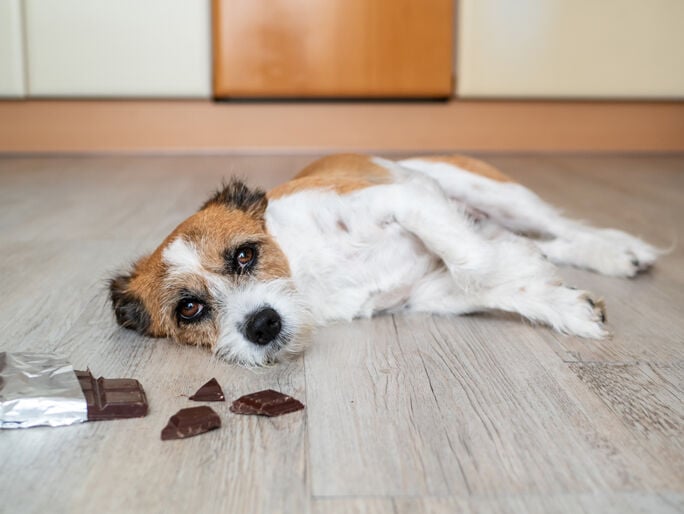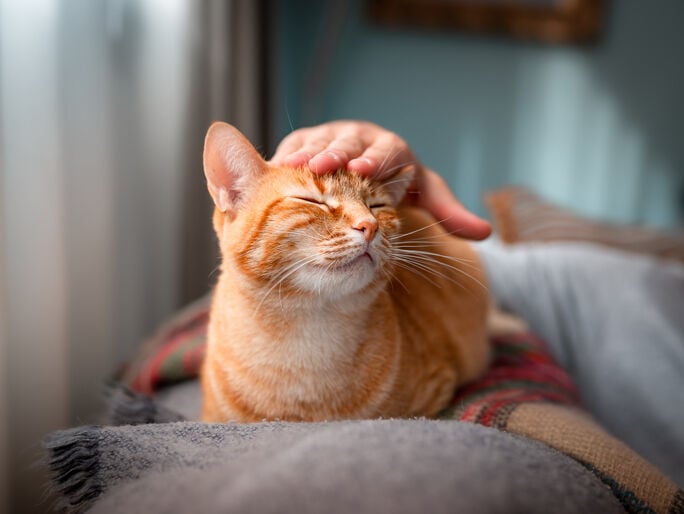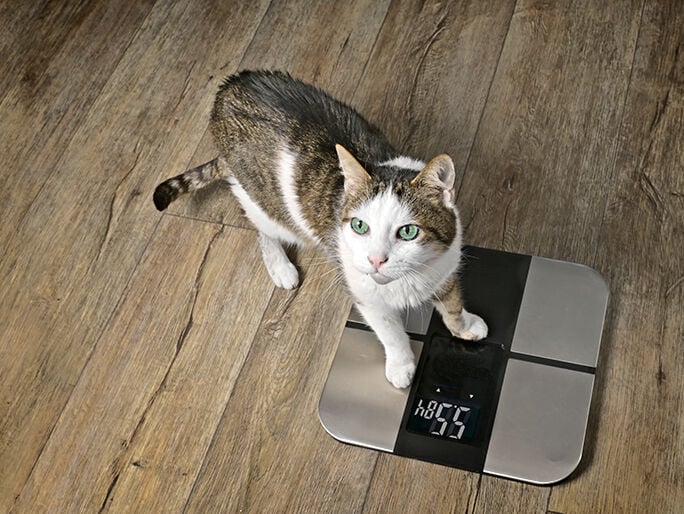how to feed your cat
From kittens to adult and senior cats, quality meals are an important starting point for your cat’s health.
Are you a cat owner? Your cat’s diet contributes to everything from their health and wellbeing to their physical appearance and quality of life.

Quality cat food includes:
- Meat based proteins
- Critical carbohydrates
- Dietary fiber
- Dietary fats
- Vitamins and minerals
- Water
- No more than 10% of their calories in treats

8 signs of digestive health problems in cats
- Behavior changes
- Sudden weight loss or gain
- Vomiting food, foam, or hairballs
- Diarrhea or straining to poo
- Loss of appetite
- Painful abdomen
- Poor hair or coat
- Excessive eating or drinking
Tips for your cat’s nutrition
Felines are famously finicky, and many of them also have sensitive stomachs. Here’s an easy overview to help you feed the cat you love as a foundation for optimal health.

Feed your cat a quality cat food
Good nutrition isn’t just feeding your cat a certain amount of food, but about feeding them the right nutrients each day. When nutrition is poor, your cat’s system doesn’t get the right fuel and it can start to break down.
A healthy balance of nutrients helps keep your cat’s body happy and healthy — working to power muscles, process oxygen, create new blood cells, build up bone and tissues, help those pretty eyes to function, and much more.
Cat digestion overview
Inside your cat is an impressive digestive system efficiently designed to break down food into fuel for all the kitty things they do, from running and romping to grooming, purring, and cuddling.
Digestion begins in the mouth through chewing and saliva which initiates the first stages of food breakdown and softening. Next, the food moves into the small and large intestines, which are coated with cells designed to absorb nutrients like water, protein, vitamins, minerals, fats, and carbs. Also inside the intestines are a kind of good bacteria or microflora, that help breaks down the food, as well as other cells that work to fight off bacteria that can disrupt the digestive process. (This is where nutrients like probiotics, which support healthy microflora, come in.)
Next, fuel is released to the rest of the body. In one important process, a sugar called glucose enters the bloodstream and is transferred into the cells via a hormone called insulin. When this process breaks down, it results in a metabolic disease called diabetes.
Once your cat’s system pulls out all the good stuff from their food, they daintily deposit the leftover waste product into their litter box.
How to know if your cat’s dietary issue may be a medical condition
Cats can be incredibly vocal about mealtime, but not so great about sharing when their tummy — or any other part — doesn’t feel right. This is when we turn to the litter box to look for signs of trouble like diarrhea or especially smelly urine.
Digestive issues can sometimes be an indicator of cat health.
Remember to consult your veterinary team if your cat is showing physical or digestive distress.
Bring them in to a Banfield hospital near you if you spot the following symptoms:
- Weight loss or gain
- Behavior changes
- Vomiting food, foam, or hairballs
- Diarrhea or constipation (straining to poo)
- Loss of appetite
- Difficulty eating
- Painful abdomen
- Poor hair coat or skin problems
- Excessive hunger
- Excessive thirst
Quality nutrition for your kitten, adult, or senior cat
Quality cat food delivers the key nutrients a cat needs to help stay healthy and happy. Your cat’s food should reflect their stage of life: kittens should eat special kitten food until they’re about a year old, while senior pets may need diets to support changing health needs.
Also keep in mind that many ingredients are complex, which means that they deliver more than one simple nutrient.
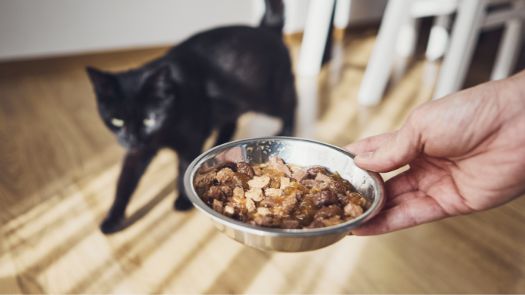
- Protein:
Cats need more protein than both people and dogs, because the amino acids in protein (like taurine) are essential to keeping their bodies functioning. Animal sources are required to supply the necessary protein and amino acids.
- Critical carbohydrates:
Cats need carbs for energy. Rice and corn are two common carbs in commercial cat food.
- Prebiotics and probiotics:
encourage the growth of good bacteria to help your cat’s tummies break down food. Two common varieties are wheat and non-digestible yeast.
- Dietary fiber:
Also called mucilage, dietary fiber is typically plant-based and helps cats with hairballs and healthy pooping.
- Dietary fats:
The right amount of essential fatty acids is important for your cat’s health, but too much can lead to digestive problems. Fats in pet food typically come from fish, flax, or canola.
- Vitamins and minerals:
There’s no sole source for the vitamins and minerals your cat needs, but a quality diet will include everything your cat needs.
- Water:
Always make sure your cat has access to clean, fresh water.
What’s the difference between wet and dry food for cats?
Both wet and dry cat foods can deliver quality nutrition to your cat. Here’s what to know when making your choice.
What’s a good cat feeding schedule?
It can be easy to overestimate how much food your cat actually needs. A commercial cat food can help by supplying recommended serving sizes on the label. However, you may still want to consult with your veterinary team if your cat is spayed or neutered, super-sedentary, or crazy active. Kittens will also need their diets adjusted as they grow.
It is most important to watch your pet and see how they respond to it — if they gain weight you may need to feed less, and if they lose weight, you may need to give them more.
Many cats enjoy grazing throughout the day, while others are fine with getting their daily calories in one or two meals. If your cat is a grazer, help them avoid obesity by sticking to the daily serving amount: there’s no need to refill every time they’ve cleared their bowl, and doing so may be dangerous to their long-term health.
If you like to give your cat treats, just make sure you’re keeping track of daily calorie amounts. Treats should only be about 10% of a healthy cat’s daily calories.
Just please, no people food! Even if your cat adores canned tuna, it’s a treat packed with calories their feline body doesn’t need and could easily lead to unfortunate issues in the litter box.
How can I switch my cat’s food?
Some cats have an automatic aversion to anything new, especially during mealtime. Your best bet is to change your cat’s diet slowly by replacing old food with new food over time.
Stick to the same feeding routine, but gradually increase the amount of their new food in each meal. The first few days, try 25% new food, and 75% old. Increase the amount of new food every few days until their bowl is 100% new.
As you switch foods, keep an eye on your cat (and the litter box). If your cat isn’t adjusting to the new food, you may need to change their diet or speak to your veterinary team about possible food intolerances.
Senior cats may need special diet support
No matter your pet’s age, keep an eye out for digestive issues like diarrhea or vomiting and mention them to your veterinary team. You may need to change your cat’s diet several times during their life depending on their physical needs.
As your cat gets older, their brain, heart, joints, and gut flora changes. They can also develop certain health issues that may require special diets or prescriptions.
How to feed kittens
What you feed your kitten matters. Overfeeding your kitten can lead to adult cat obesity, so check with your veterinary team and follow recommended serving sizes by age and weight.
Kittens are weaned at around 6-8 weeks. Once they’ve left their mamas, we recommend energy-dense kitten food served in small meals throughout the day, plus easy access to lots of fresh water.
Serve your kitten a food formulated for kittens for healthy growth. Because kitten food has a different nutritional profile than adult cat food, stick to food designed for kittens until they’re about 12 months old.
Cats are creatures of habit, so it can help to slowly transition them to their adult food by gradually increasing the amount of new food and decreasing the old.
Check our tips for switching up cat food in the section above.
Mentioned in this article
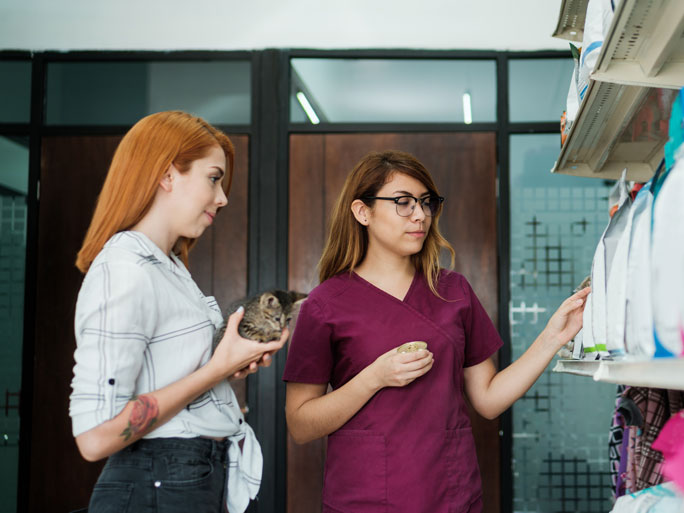
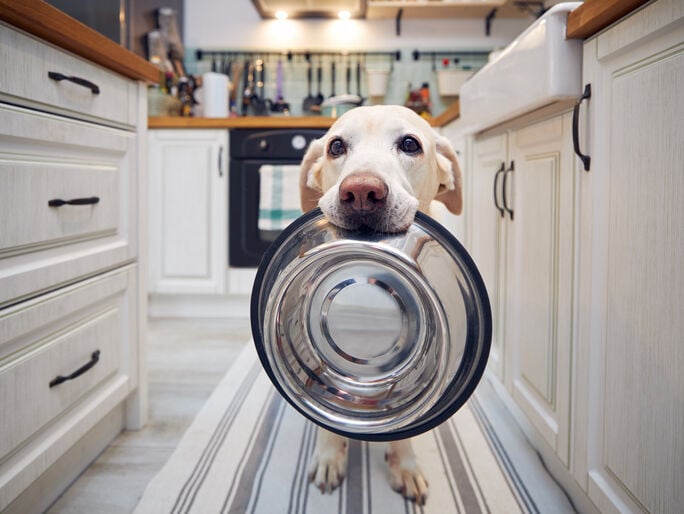
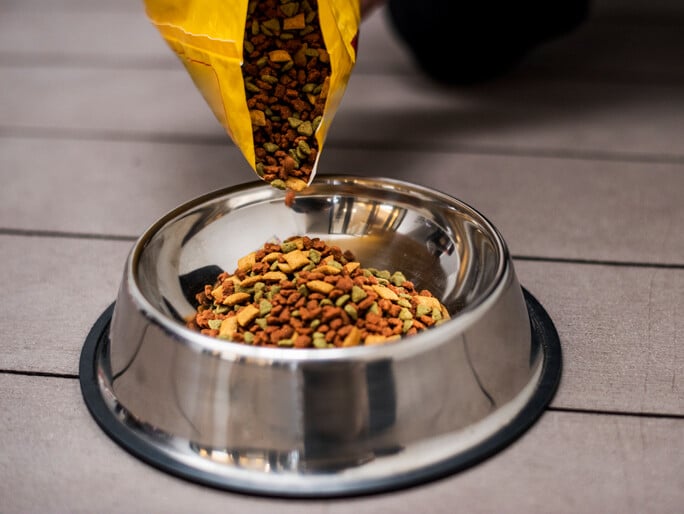

Need advice on flea control? Ping Pet Chat™!
Whether it's 3 a.m. or 3 p.m., connect with a real veterinary professional for immediate petcare advice. It's included in all Optimum Wellness Plans®!
Log in to start chattingHow Banfield can help with dog and cat diet and nutrition
What your pet eats can make a big difference to their health! Our vets can perform physical exams, run tests, and help you manage your pet’s food-related issues, including obesity, diabetes, and food allergies.
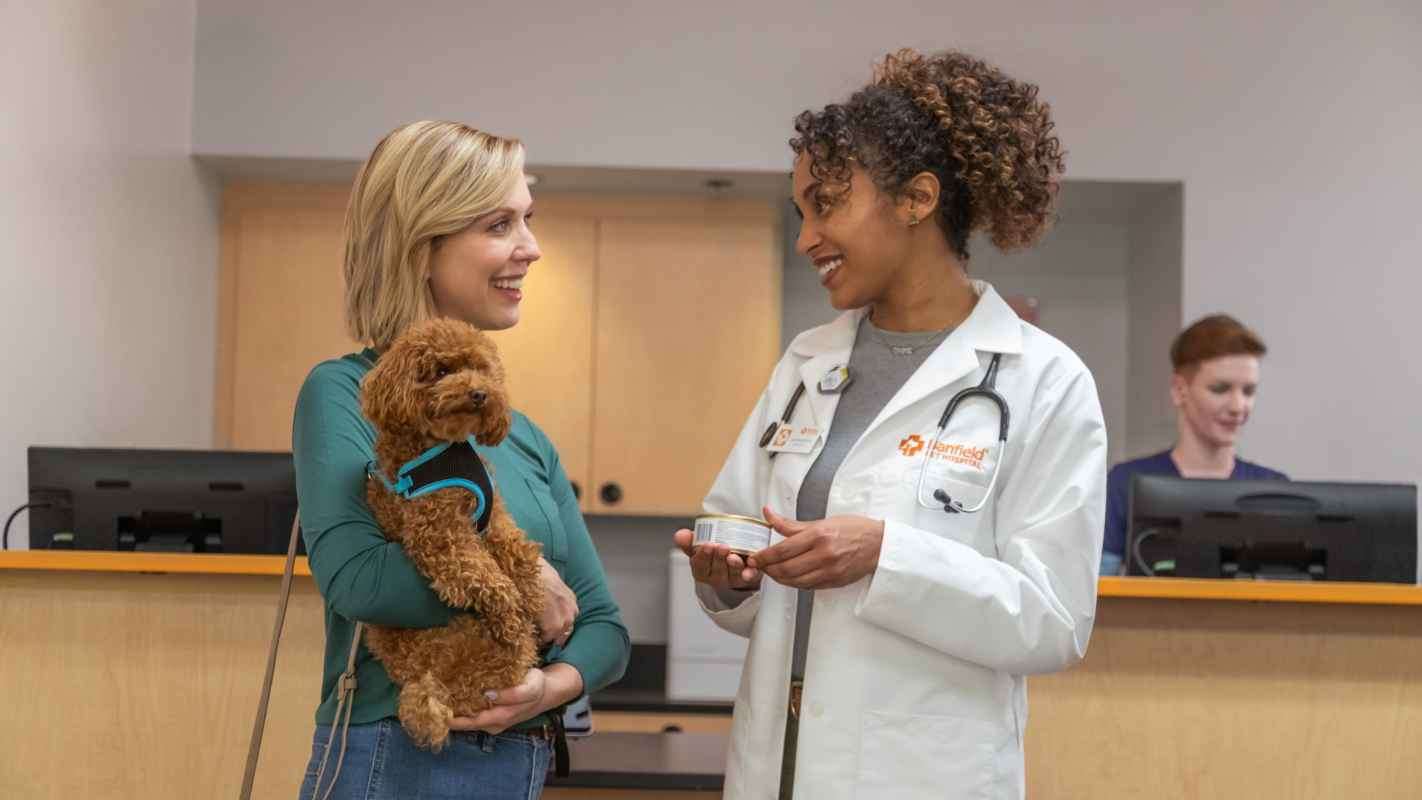
Get help managing pet food allergies. Do you think your pet’s immune system is reacting to certain ingredients in their food? We can help identify pet food allergies and work with you on management diets.
Does your pet have diabetes? Let’s work together! This includes everything from recommendations on what to feed your pet, how to manage their food and injection schedule, providing appropriate prescriptions, and showing you how to safely perform insulin injections for the pet you love.
We can help your pet reach a healthy weight. We've got advice on diet and exercise for both overweight and underweight pets. Does your pet have a mobility issue that makes it hard for them to exercise? We can help there, too.
 Mites and mange
Mites and mange Podcast - Not Just Fluff
Podcast - Not Just Fluff

